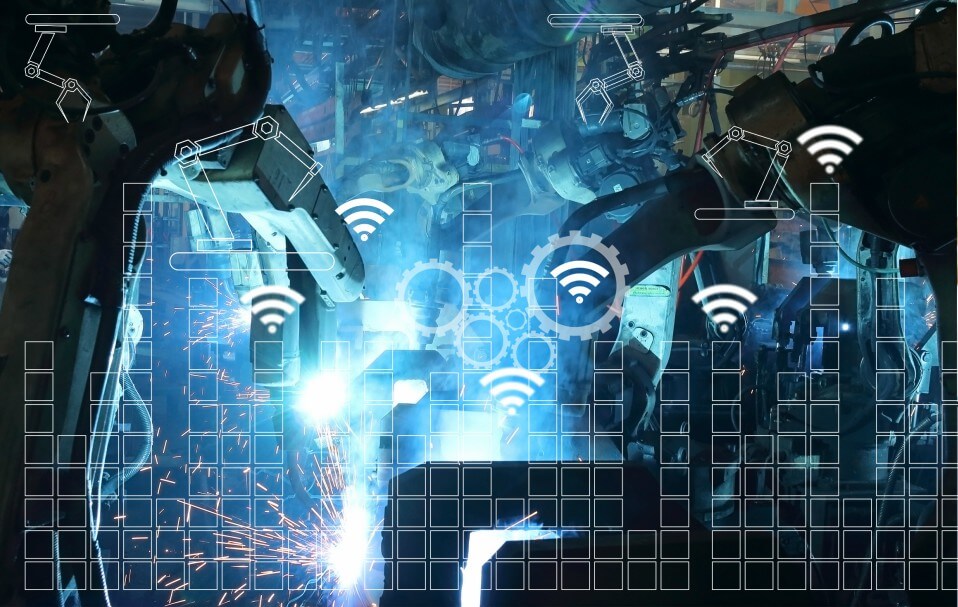The Internet of Everything Manufacturing and Product Lifecycle Management

The Internet of Things (IoT), also referred to as the Internet of Everything, the Industrial IoT, Machine to Machine, or ‘connected devices’, has the potential to transform and disrupt traditional manufacturing models, according to Forbes. The connection of devices through IoT provides transformational opportunities for managing the shop floor, product lifecycle, supply chain, and the manufactured devices themselves.
Product Lifecycle Management (PLM) is no exception. Before the era of data-gathering sensors, product developers had to rely on customer feedback to learn what did and didn’t work about their products. Over time, this approach had several drawbacks. For example, if a customer complains about a product being ‘poor’ or ‘too slow’ it has been traditionally difficult to extract meaningful feedback. Customer feedback cannot be collected in real-time, which forced product developers to work with dated information that is usually only gathered periodically.
The challenge is not only the ability to collect real-time product performance data, but also to reduce the amount of time to manually diagnose and recommend action. What if this analysis could be done with less or even no human intervention, aided by sensors, data, and intelligent automation? Sensors, data, and intelligent automation are the driving forces behind the Internet of Things, which offers a clear solution to traditional PLM woes.
The IoT Domino Effect
With connected products, developers can quickly access data on customer behaviour usage patterns. A domino effect can be initiated by one action from a single actor that may trigger a chain of subsequent, related actions to create a cumulative effect. Each action can be analysed separately or aggregated for insights into usage behaviour and areas of possible product evolution.
The basic action of starting a car can be an example. This action activates many embedded sensors, where each sensor has a specific role and pre-defined data gathering scope. Once a driver starts driving the car, additional sensors come to life and start recording and transmitting data based on instructions and computerised algorithms. This is known as a combination of sensors, analytics and feedback which creates a cascading set of communications between the original equipment manufacturer (OEM) and the car that allows secondary and tertiary responses based on the initial input.
Graham Cross Redline’s Contracts and Interim Manager, discusses further: “What's transformative about the IoT isn't the internet itself, but the changing nature of ‘things’. Smart, connected products are generating new value in ways we couldn't imagine even five years ago – from reduced costs of manufacturing production to improved efficiencies in areas like service and innovation, opening up new landscapes for innovation and growth. As innovative product designers dream up countless ways to exploit the inherent connectivity that will be offered in intelligent products, an endless universe of new devices will explode upon the market. And as user-oriented computing expands, so will the Internet of Things market. “
Graham continues: “IoT enables product developers to obtain an unprecedented level of feedback, in real-time. For the Product Lifecycle Management, the implications are clear: IoT data insight stimulates product innovation, which ultimately results in even more refined data insights, which stimulates further product research, product development and product innovation.”
“As with many sectors including engineering, technology and manufacturing, the plethora of IoT beneficiaries continues. Product designers no longer need to rely on hypothetical ideas or wait for anecdotal evidence for input into new or existing products. The combination of sense-response data collection, feedback and more sophisticated simulations are spurring exciting advances in product development. In adaptive digital factory, new products are developed in days, not months. Smart connected devices improve the collaboration and flexibility across the entire value chain from the supplier to the factory to the end customer. Harnessing IoT data allows the plant manager to adapt to changes more quickly, whether it is a new product introduction, or fluctuations in the supply of a particular component or in customer demand,” says Graham
“From a product design perspective, the opportunity is huge and the possibilities are endless. Sensors embedded in everything from buildings to vehicles to every day household electronics could help solve real-life problems. Things are already generating more data than people or applications. Translating that data into insights and intelligent decisions is the key to effective analytics in the engineering and manufacturing sector. Intelligent, future-facing decisions can be derived from Thing Data, provided the company applies a digitised process context to orchestrate tasks for actions executed by humans, enterprise applications, supply chain partners, and increasingly smart Things or devices. The next industrial revolution is already here.”
To find out more about operations, manufacturing, quality jobs and careers in supply chain or to see our latest job opportunities, please click here or alternatively contact Graham Cross on 01582 878849 or by email at GCross@RedlineGroup.com

